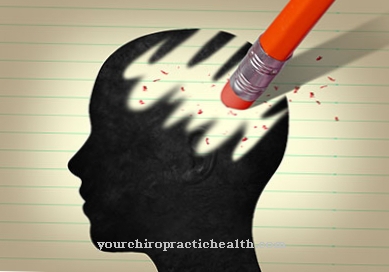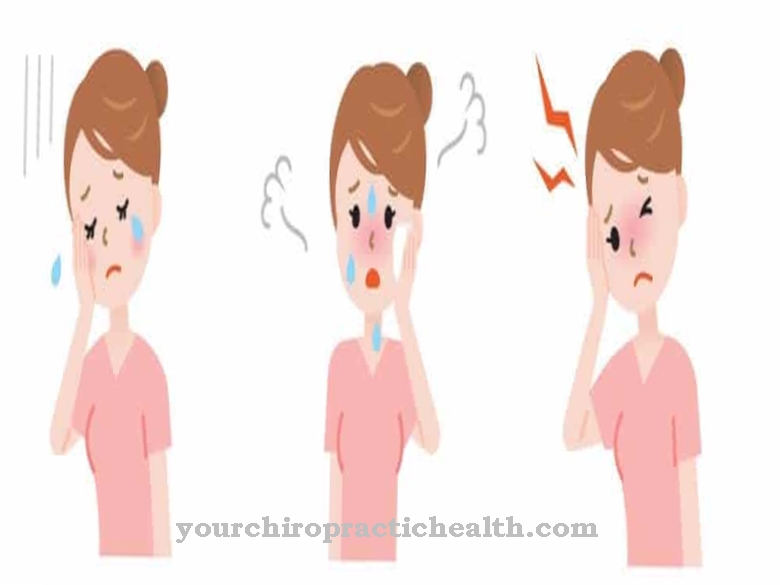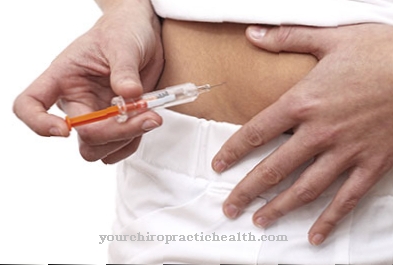The toxic shock syndrome (TSS) is also as Tampon disease known. It is a dangerous infection that causes massive discomfort and can lead to organ failure and death. Fortunately, this disease is no longer common in Germany.
What is Toxic Shock Syndrome?

© fotohansel - stock.adobe.com
The toxic shock syndrome is caused by the metabolic products of dangerous bacterial strains, the streptococci and the Staphylococcus aureus, which find their way into the human body in most cases through long wearing of a tampon, but also through festering wounds, insect bites or the like.
The infection leads to a number of extremely unpleasant symptoms. There is a high fever between 38.9 and 40 degrees, in addition there are often severe muscle pain, low blood pressure (often in connection with fainting or weaknesses), palpitations, hematomas, irritation of the mucous membranes (reddening) and disorientation or confusion.
In the gastrointestinal tract, the infection often manifests itself as nausea and / or vomiting, there are disorders of the liver and kidney function, and a widespread rash occurs (the skin typically puffs on the palms of the hands and soles of the feet). If the infection was caused by streptococci, there may also be breathing difficulties, necrosis and bleeding disorders.
causes
In roughly fifty percent of cases, the trigger is actually a (highly absorbent) tampon that has remained in the vagina for too long and provides the pathogens with an optimal breeding ground. However, purulent wounds, wearing a diaphragm for contraception, burns and surgical wounds can also be entry points for the pathogens Staphylococcus aureus and streptococci.
The metabolic processes of these two types of bacteria, which are aimed at humans, produce toxins that cause the disease (hence "toxic", which means poisonous in German). Streptococcal infection is slightly more dangerous, but also less common than Toxic Shock Syndrome caused by Staphylococcus aureus.
Symptoms, ailments & signs
Toxic shock syndrome is characterized by a sudden, severe feeling of illness. Without treatment, the disease can quickly lead to death. It is striking that this syndrome occurs mainly in young and previously healthy people whose immune systems are intact.
However, since those affected come into contact with the bacterial toxin for the first time when the disease breaks out, the violent reactions of the body can be explained. Toxic shock syndrome is characterized by severe general symptoms, skin symptoms and, in women, often also by gynecological symptoms. The general symptoms include chills, fever, nausea, vomiting, diarrhea, dizziness, muscle pain and even circulatory collapse.
The blood pressure is very low and the body temperature usually exceeds 38.9 degrees Celsius. Typical skin symptoms are extensive skin rashes and skin peeling on the soles of the feet and palms after about one to two weeks. Since the infections are very often triggered by tampons in the genital area, there is often inflammation of the mucous membrane in the vagina and purulent vaginal discharge.
In addition to the gastrointestinal tract, the skin and the vaginal mucosa, the liver, kidneys, blood or even the central nervous system can be damaged. Therefore, in the course of the disease, the development of liver or kidney failure is possible. Furthermore, states of confusion can occur. In particularly severe cases, life-threatening shock symptoms develop with cold sweat, cyanosis, greatly increased respiratory rate due to the lack of oxygen, an insatiable feeling of thirst and acute kidney failure.
Diagnosis & course
Many of the symptoms are similar to other infections and can initially mislead health professionals. If people suffer from the symptoms described above and are aware that they have worn a tampon for a long time or have given the bacteria a similar entry point, they should inform the doctor immediately.
The symptoms themselves are severe and similar to those of blood poisoning. Clinical evidence of the toxic shock syndrome takes place through a blood smear, in which antibodies against the bacterial toxin TSST-1 can be detected in the event of illness. If Toxic Shock Syndrome is recognized and treated in good time, there is a very good chance of a complete cure. However, if left untreated, it can also lead to organ failure or even death.
When should you go to the doctor?
With this disease, the person affected is dependent on medical treatment and examination, as this is the only way to cure it. If the disease is treated late or not at all, serious complications occur and, in most cases, death of the person affected by organ failure. Therefore, with this disease, a doctor must be contacted at the first symptoms and signs.
The doctor should be consulted if the person concerned suddenly suffers from nausea or vomiting. There is also a fever and, in most cases, very severe pain in the muscles. Most of the people affected also feel dizzy and often loss of consciousness. Confusion or blue skin and lips can also indicate this syndrome and should be checked by a doctor.
If these symptoms occur, an emergency doctor should be called immediately or a hospital should be visited. Further treatment is usually carried out as an inpatient. The further course depends very much on the exact symptoms and the cause of the syndrome.
Treatment & Therapy
A quick treatment of the toxic shock syndrome is urgently advisable, because those affected feel extremely bad with the symptoms. If treatment is not given in time, (multiple) organ failure and even death can result.
Those affected must be admitted to the hospital immediately and given an intravenous antibiotic that fights the infection and kills the bacteria. Additional measures are often taken to provide the best possible stabilization for the patient.
This includes the supply of sufficient fluid (also intravenously) to keep the body's functions constant and to counteract the shock. Sometimes oxygen is given or, if the kidneys are damaged, dialysis is carried out.
You can find your medication here
➔ Medicines for fever and chillsprevention
In Europe, after the disease wave of the 1970s, the production and storage of tampons was significantly improved from a hygienic point of view, and tampons were made (for the most part) less absorbent, so that they had to be changed more frequently, which in turn increased the risk for that toxic shock syndrome lowered.
Tampons sold in Germany must provide information on toxic shock syndrome on the packaging or in the package insert. The best prevention is actually to change tampons frequently (of course, only with thoroughly washed fingers!) And sometimes, for example at night, to use sanitary towels instead. Contraceptive diaphragms should not be left in the vagina longer than necessary.
That the good education about the toxic shock syndrome is already paying off today can also be seen from the - compared to the USA - very moderate annual infection rate, which is around 1 per 200,000 people.
Aftercare
Toxic shock syndrome is a rare condition that requires consistent follow-up care. The contact persons are the gynecologist or the specialists who specialize in affected body parts, such as the nephrologist or internist for kidney problems or the dermatologist with regard to the frequent skin involvement. The psychologist can subsequently support those affected to process the often severe clinical picture after therapy psychologically well.
Switching to a different monthly hygiene than tampons is very important in the context of aftercare, since tampons are a frequent trigger of the TSS, which is popularly also known as tampon disease. In addition to sanitary towels, menstrual cups, which are also used by sustainable consumers to avoid piles of rubbish around menstruation, can also be considered.
Toxic shock syndrome is often a burden for the whole organism. Therefore, the body should be spared and strengthened at the same time during aftercare. Getting enough sleep and eating a healthy diet are important factors in this regard. In addition, drinking enough fluids helps to flush toxins out of the body and stabilize the circulation in the long term.
Movement serves to regenerate the body, but should initially be done with special care. Walks are often sufficient here. Any affected skin areas must initially be consistently protected from UV light, also as part of aftercare.
You can do that yourself
Toxic shock syndrome is a serious illness that requires medical attention. Various self-help measures can be taken depending on the course.
Affected people have to take it easy and follow a suitable diet. In the first days and weeks after a hospital stay, diets are recommended. If a fever has occurred as part of the toxic shock syndrome, the body temperature must be checked regularly. If in doubt, the attending physician must be contacted. This is particularly recommended for recurring complaints that do not subside despite rest and bed rest. With early treatment without serious complications, bed rest is sufficient to overcome toxic shock syndrome. Should serious complications such as organ failure or high fever occur, a long recovery phase is necessary after the treatment so that the body can regenerate sufficiently.
After or during recovery, it is also important to determine and remedy the causes of the occurrence of the toxic shock syndrome. Physical hygiene needs to be improved to prevent the disease from recurring. Women need to follow the instructions on how to use tampons. In general, risk factors should be minimized.



.jpg)









.jpg)

.jpg)
.jpg)











.jpg)